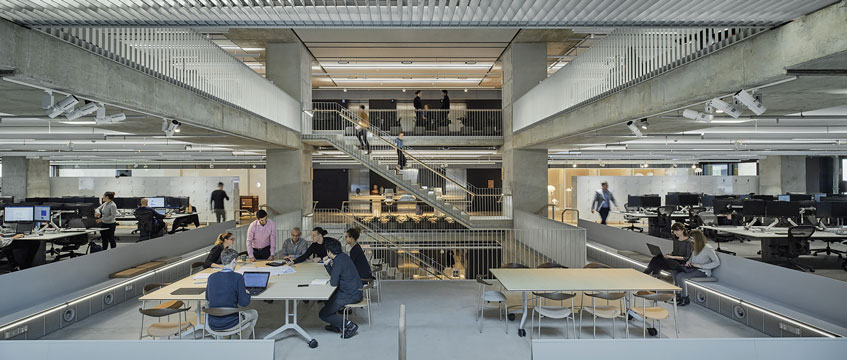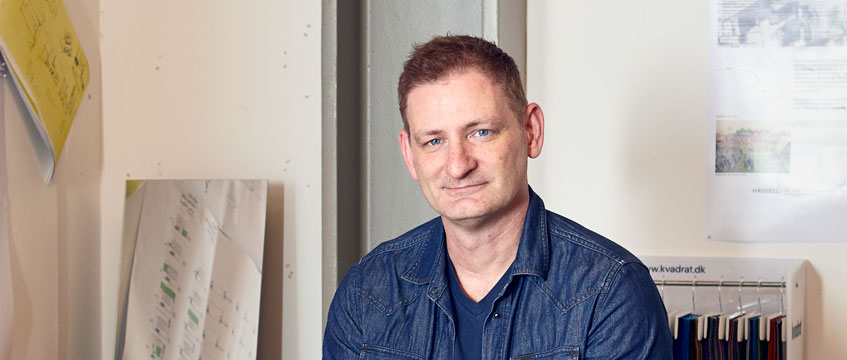The notion of agile working started in Australia in the 2000s, with banks leading the way, followed by law firms, tech companies and the public sector. Today, two-thirds of Australian organisations have adopted agile-based working, and yet it seems to only just be becoming part of the workplace discourse in the UK.
At Hassell we recently carried out extensive global research into workplace design, visiting offices in San Francisco, New York, Seattle, London and Amsterdam, of global corporates including Microsoft, Amazon and Airbnb. We found Australia to be a decade ahead of Europe and America in its workplace design thinking.
From my own observations, having worked in this sector in Asia, the Middle East and Europe, I believe that Australia is leading the way in workplace design due to a combination of factors. Its business culture and built environment landscape together lends a more relaxed and experimental attitude to how and where people work.
Give it a go
Firstly, in terms of building landscape, lease cycles in Australia and Asia are much shorter than in, for example, Europe. Whereas in the UK it is not uncommon for large tenants to stay in the same location for 25-plus years, in Australia leases are on average between three and five years. This shorter lease pattern means a more rapid cycle of transformation, with reduced long-term risk, giving way to a more “give it a go” attitude.
In addition, space and land are more readily available in Australia than the UK. This, combined with relatively light regulations, both expedites delivery and facilitates a faster pace of change when it comes to design. Because of the historical context of buildings so often in play in the UK, compliance, regulations and complexities can routinely inhibit true workplace transformation.

Then there’s scale. Whereas in the UK businesses are dispersed across locations, nearly all of the banking sector in Australia now finds itself in purpose-built agile or activity based urban campuses, having co-located all business divisions to drive efficiency, reinforce culture and create innovation through collaboration.
Therefore, the design challenge in Australia is how to make a 1m square metre workplace work for the 7,000 inhabitants doing diverse roles and tasks within it. The design of any agile workplace responds to the needs of teams not the individual, and so a breakout space, for example, may be enabled with both the technology and cultural policies to support it being used for work, collaboration or respite.
These factors, including shorter leases, more space and greater scales, combine to create a more client-driven marketplace in Australia, with large clients demanding what they want from developers, and threatening to go and build it themselves if they can’t find what they are looking for. Ambitious client goals mean designers are delivering diverse outcomes, and always trying to push the envelope in terms of design innovation.
Can-do attitude
Then, you come to culture. Australians have a unique business culture, based on an egalitarian, can-do attitude, light on hierarchy and bureaucracy, and underscored by a direct communication style. This means that there are fewer layers to an executive team, and greater direct access to decision-makers. This translates to workplace designers and decision-makers at the same table, having open and frank discussions, which in turn can facilitate more direct impact at a greater speed.
And Australia’s national culture may also play a role. Because of Australia’s isolated place in the world, it is an outward-focused nation of early adopters, who look at innovations elsewhere in the world, and ask: how can we make them our own? Which begs the question, where is Australia headed next in terms of its workplace influences?
The next generation of workplaces in Australia are being driven by experience. An experience-led design process considers all the people who might interact with an organisation, whether a long-standing client, a member of the public walking in off the street, a dedicated employee, or a potential job candidate landing on a webpage. It must engage multiple senses across multiple platforms in a joined-up way, making feelings and emotions the starting point of the design process.
Crucially, designing workspaces from this standpoint means asking what you want to give in return for paying attention to your organisation. That experience doesn’t have to be led by novelty, but it must be authentic to purpose – much like agile-working.
Matthew Blain is principal and regional leader at Hassell











